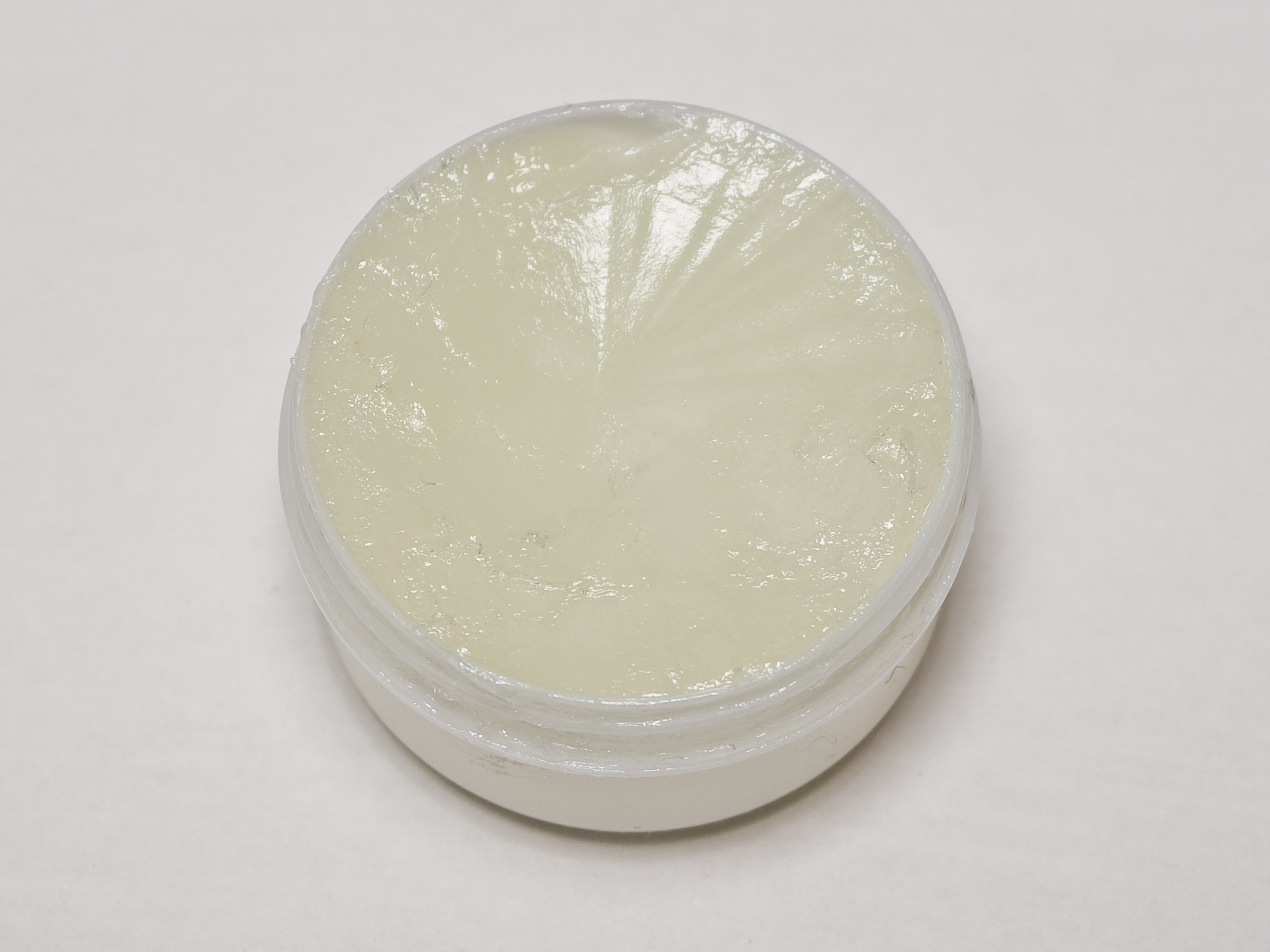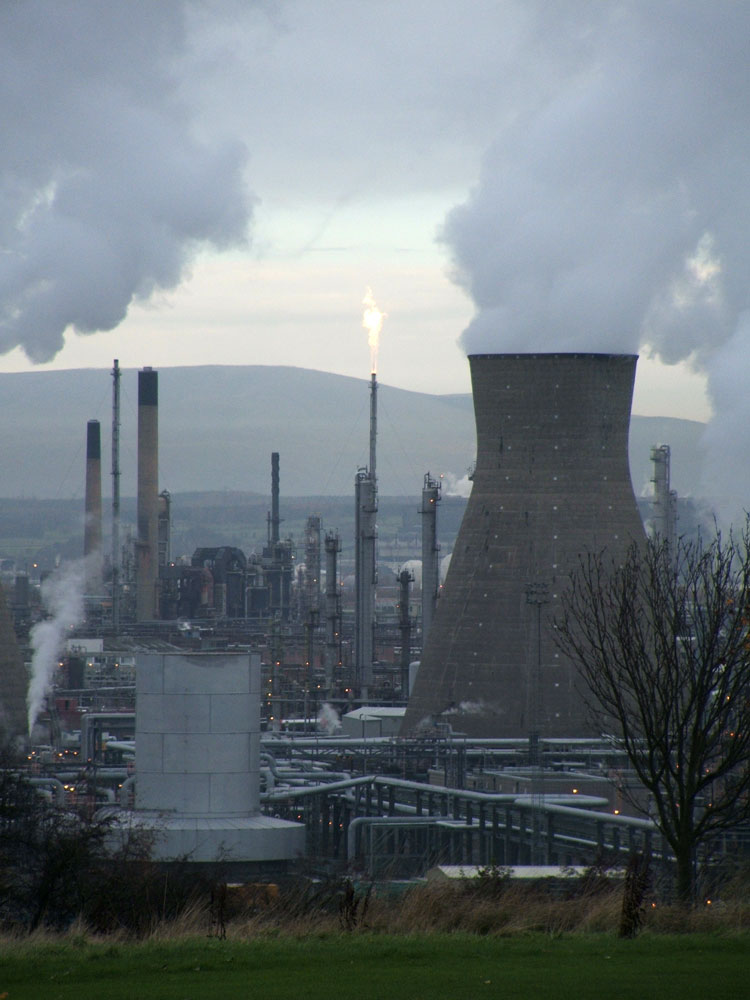|
Icky-pick
Icky-pick or icky-pic is a gelatinous cable compound used in outdoor-rated communications cables, including both twisted-pair copper cabling and fiber-optic cabling. "PIC" is the abbreviation for "plastic insulated cable". The cable is filled with an "icky" substance. The filled cable itself, therefore, is called an "icky PIC". Icky-pick has two primary functions: * Deter animals from biting and damaging the cable due to the smell and taste of the gel * Seal any nick or gash in the outer jacket if they do bite it, preventing water from entering the cable and damaging it by corrosion and freeze expansion The actual icky-pick compound is a very thick petroleum-based substance e.g. petroleum jelly, and is only rated for outdoor use, frequently direct-buried in the ground. An outdoor cable spliced onto an indoor terminal block is prone to leak the gelatin, hence in many situations the icky-pic cable is spliced outside the building to a short run of normal cable which runs through a ... [...More Info...] [...Related Items...] OR: [Wikipedia] [Google] [Baidu] |
Cable Compound
Cable compounds are materials used to prevent the ingress of moisture into telecommunication and power transmission cables. The compound used varies depending upon the type of cable; generally, they are either soft waxy compounds (for use in copper-wire telecom cables), soft thixotropic gels with a consistency similar to that of hair gel (for use in optical fibre cables), or resin/polymer thickened oils (for use in paper insulated energy cables). A cable with such a compound is called a filled cable. Cable compounds are formulated and manufactured to have very good electrical resistance properties to ensure good functioning of the filled cable. Icky-pick Icky-pick or icky-pic is a gelatinous cable compound used in outdoor-rated communications cables, including both twisted-pair copper cabling and fiber-optic cabling. "PIC" is the abbreviation for "plastic insulated cable". The cable is filled wit ... is a common gel-type compound used in outdoor fiber-optic cables. References ... [...More Info...] [...Related Items...] OR: [Wikipedia] [Google] [Baidu] |
Communications Cable
Telecommunications cable is a type of guided transmission medium. Telecommunications are based on transmitting and receiving modulated waves/signals through a medium. Types of telecommunications cable include: electrical cables when electric current is carried; transmission lines and waveguides when electromagnetic waves are transmitted; optical fibers when light signals are transmitted. When the distances involved are very short, the term ''signal cable'' may be used, for analog or digital communication. A ''data cable'' is used in digital data communications. Data cabling must conform to certain standards and best practices to ensure reliable performance and safety. When the distance between the transmitter and receiver is very far, an unguided or wireless medium transmission may be used, based on antennas. Examples include: * Ethernet cables ( Cat 5, Cat 5e, Cat 6, Cat 6A) * Token Ring cables ( Cat 4) * Coaxial cable mainly used for analog communication, sometimes used as a ... [...More Info...] [...Related Items...] OR: [Wikipedia] [Google] [Baidu] |
Twisted Pair
Twisted pair cabling is a type of communications cable in which two conductors of a single circuit are twisted together for the purposes of improving electromagnetic compatibility. Compared to a single conductor or an untwisted balanced pair, a twisted pair reduces electromagnetic radiation from the pair and crosstalk between neighboring pairs and improves rejection of external electromagnetic interference. It was invented by Alexander Graham Bell. For additional noise immunity, twisted-pair cabling may be shielded. Cable with shielding is known as shielded twisted pair (STP) and without as unshielded twisted pair (UTP). Explanation A twisted pair can be used as a balanced line, which as part of a balanced circuit can greatly reduce the effect of noise currents induced on the line by coupling of electric or magnetic fields. The idea is that the currents induced in each of the two wires are very nearly equal. The twisting ensures that the two wires are on average the ... [...More Info...] [...Related Items...] OR: [Wikipedia] [Google] [Baidu] |
Fiber-optic Cable
A fiber-optic cable, also known as an optical-fiber cable, is an assembly similar to an electrical cable but containing one or more optical fibers that are used to carry light. The optical fiber elements are typically individually coated with plastic layers and contained in a protective tube suitable for the environment where the cable is used. Different types of cable are used for fiber-optic communication in different applications, for example long-distance telecommunication or providing a high-speed data connection between different parts of a building. Design Optical fiber consists of a core and a cladding layer, selected for total internal reflection due to the difference in the refractive index between the two. In practical fibers, the cladding is usually coated with a layer of acrylate polymer or polyimide. This coating protects the fiber from damage but does not contribute to its optical waveguide properties. Individual coated fibers (or fibers formed into ribbons or ... [...More Info...] [...Related Items...] OR: [Wikipedia] [Google] [Baidu] |
Filled Cable
In telecommunications, a filled cable is a cable that has a non-hygroscopic material, usually a gel called icky-pick, inside the jacket or sheath. The nonhygroscopic material fills the spaces between the interior parts of the cable, preventing moisture from entering minor leaks in the sheath and migrating inside the cable. A metallic cable filled with a dielectric material, such as a coaxial cable or a metal waveguide A waveguide is a structure that guides waves by restricting the transmission of energy to one direction. Common types of waveguides include acoustic waveguides which direct sound, optical waveguides which direct light, and radio-frequency w ..., is not considered to be a "filled cable". References Further reading See TelcordiGR-421-CORE ''Generic Requirements for Metallic Telecommunications Cables,'' for filled, polyolefin-insulated conductor (PIC) cable requirements. Signal cables {{telecomm-stub ... [...More Info...] [...Related Items...] OR: [Wikipedia] [Google] [Baidu] |
Petroleum
Petroleum, also known as crude oil or simply oil, is a naturally occurring, yellowish-black liquid chemical mixture found in geological formations, consisting mainly of hydrocarbons. The term ''petroleum'' refers both to naturally occurring unprocessed crude oil, as well as to petroleum products that consist of refining, refined crude oil. Petroleum is a fossil fuel formed over millions of years from anaerobic decay of organic materials from buried prehistoric life, prehistoric organisms, particularly planktons and algae, and 70% of the world's oil deposits were formed during the Mesozoic. Conventional reserves of petroleum are primarily recovered by oil drilling, drilling, which is done after a study of the relevant structural geology, sedimentary basin analysis, analysis of the sedimentary basin, and reservoir characterization, characterization of the petroleum reservoir. There are also unconventional (oil & gas) reservoir, unconventional reserves such as oil sands and oil sh ... [...More Info...] [...Related Items...] OR: [Wikipedia] [Google] [Baidu] |
Petroleum Jelly
Petroleum jelly, petrolatum (), white petrolatum, soft paraffin, or multi-hydrocarbon, CAS number 8009-03-8, is a semi-solid mixture of hydrocarbons (with carbon numbers mainly higher than 25), originally promoted as a topical ointment for its healing properties. Vaseline has been the leading brand of petroleum jelly since 1870. After petroleum jelly became a medicine-chest staple, consumers began to use it for cosmetic purposes and for many ailments including toenail fungus, genital rashes (non- STI), nosebleeds, diaper rash, and common colds. Its folkloric medicinal value as a "cure-all" has since been limited by a better scientific understanding of appropriate and inappropriate uses. It is recognized by the U.S. Food and Drug Administration (FDA) as an approved over-the-counter (OTC) skin protectant and remains widely used in cosmetic skin care, where it is often loosely referred to as mineral oil. History Marco Polo in 1273 described the oil exportation of Baku ... [...More Info...] [...Related Items...] OR: [Wikipedia] [Google] [Baidu] |
Direct-buried Cable
Direct-buried cable (DBC) is a kind of communications or transmissions electrical cable which is especially designed to be buried under the ground without any other cover, sheath, or duct to protect it. Most direct-buried cable is built to specific tolerances to heat, moisture, conductivity, and soil acidity. Unlike standard telecommunications and power cables, which have only a thin layer of insulation and a waterproof outer cover, DBC consists of multiple layers of heavy metallic-banded sheathing, reinforced by heavy rubber covers, shock absorbing gel, wrapped thread-fortified waterproof tape, and stiffened by a heavy metal core. DBC is preferable in some areas since it is more resistant to being the focus of lightning discharges. Communications Most cable of this kind is coaxial or bundled fiber-optic cable. In the 20th century much of it was filled cable. Direct-buried cable is cheaper and easier to lay than other kinds of cable that require protection from the earth. ... [...More Info...] [...Related Items...] OR: [Wikipedia] [Google] [Baidu] |
Electrical Conduit
An electrical conduit is a tube used to protect and route electrical wiring in a building or structure. Electrical conduit may be made of metal, plastic, fiber, or fired clay. Most conduit is rigid, but flexible conduit is used for some purposes. Conduit is generally installed by electricians at the site of installation of electrical equipment. Its use, form, and installation details are often specified by wiring regulations, such as the US National Electrical Code (NEC) and other building codes. Comparison with other wiring methods Electrical conduit provides very good protection to enclosed conductors from impact, moisture, and chemical vapors. Varying numbers, sizes, and types of conductors can be pulled into a conduit, which simplifies design and construction compared to multiple runs of cables or the expense of customized composite cable. Wiring systems in buildings may be subject to frequent alterations. Frequent wiring changes are made simpler and safer through the ... [...More Info...] [...Related Items...] OR: [Wikipedia] [Google] [Baidu] |
Paint Thinner
Paint thinners are diluents — solvents used to adjust the viscosity of paint, as well as similar preparations such as varnish and lacquer, by dilution. For water-based paints, such as acrylic paints, water is the primary solvent, but notably, may not always be the only solvent as there may be low level usage of other solvents to assist in ensuring a consistent paint mixture. Organic solvents labelled "paint thinner" are usually turpentine or white spirits / mineral spirits for the use of diluting oil-based paints only. These organic solvents on traditional painting materials can have harmful effects on the environment in of themselves as well as through the release of hazard substances, including lead and other additives from dissolved paint stuffs. Uses Principally, paints are either a colloidal suspension of solid pigment particles or are an emulsion of dense viscous dye gel or paste with a filler all dispersed through a lighter free-flowing liquid medium — the solve ... [...More Info...] [...Related Items...] OR: [Wikipedia] [Google] [Baidu] |
Petroleum Products
Petroleum products are materials derived from crude oil (petroleum) as it is processed in oil refineries. Unlike petrochemicals, which are a collection of well-defined usually pure organic compounds, petroleum products are complex mixtures. Most petroleum is converted into petroleum products, which include several classes of fuels. According to the composition of the crude oil and depending on the demands of the market, refineries can produce different shares of petroleum products. The largest share of oil products is used as "energy carriers", i.e. various grades of fuel oil and gasoline. These fuels include or can be blended to give gasoline, jet fuel, diesel fuel, heating oil, and heavier fuel oils. Heavier (less volatile) fractions can also be used to produce asphalt, tar, paraffin wax, lubricating and other heavy oils. Refineries also produce other chemicals, some of which are used in chemical processes to produce plastics and other useful materials. Since petroleum o ... [...More Info...] [...Related Items...] OR: [Wikipedia] [Google] [Baidu] |




